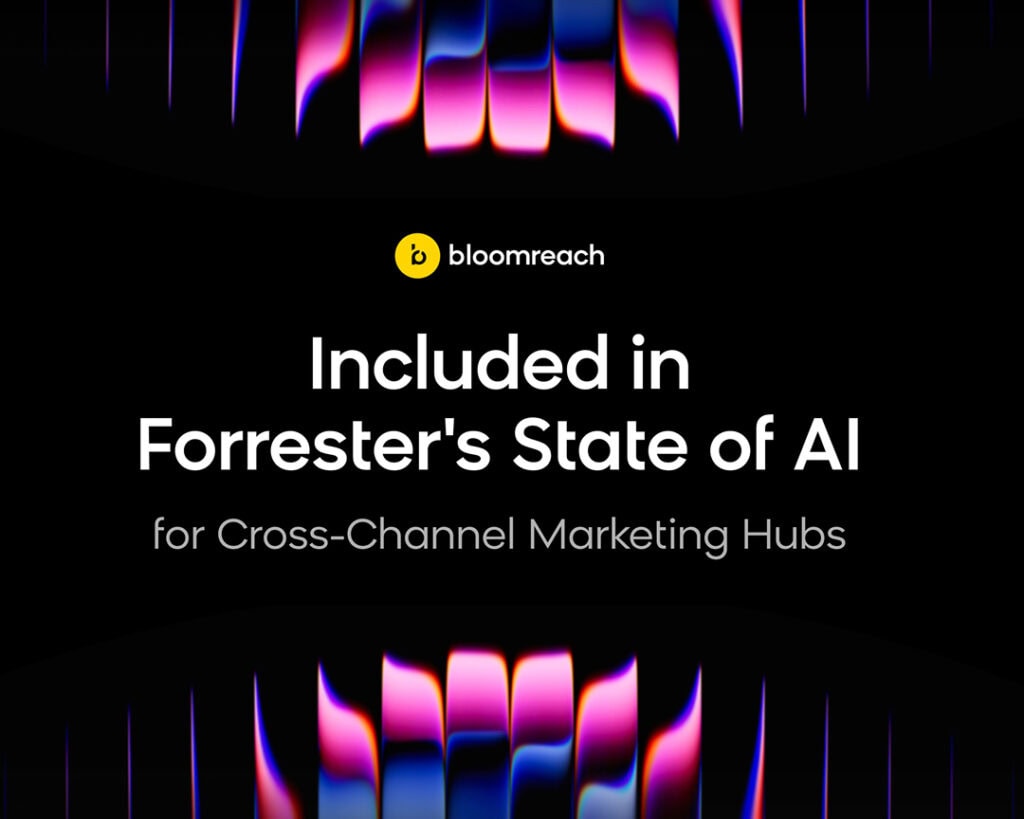AI has become one of the hottest topics in marketing technology. Nearly every platform claims to be “AI-powered,” but not every solution will actually move the needle for your business.
AI-driven efficiency is just the starting line. The true ROI comes from how that efficiency is translated into better customer experiences. In the long run, it’s those experiences that fuel customer loyalty, revenue, and sustainable growth.
Here is how to make sure that you choose AI that not only saves you time, but most importantly, will drive better customer experience:
Why Choosing the Right AI Vendor Matters
Marketers today are under pressure to fix real problems like data silos, underperforming campaigns, or lack of personalization at scale. In a landscape filled with hype, demos, and buzzwords, the challenge isn’t whether to adopt AI. It’s how to make clear, confident decisions about where and how would fit into your martech stack, and what impact it would have on your business.
Choosing the right AI means that you’re not just buying a feature set, you’re buying momentum. But beware the efficiency trap. If you’re only chasing time savings, your AI project may be “approved but unloved”, the kind that gets quietly shelved when priorities shift.
To identify the right AI features and functionalities look at
- How can you prove value early, without getting locked into a roadmap that underdelivers?
In a recent report, The State Of AI For Cross-Channel Marketing Hubs, Forrester noted that “Beyond the hype, AI marks a martech paradigm shift. But aligning AI use cases with your customer obsession vision demands a thorough understanding of business requirements, organizational readiness, data and technology prerequisites, and the current functionality of AI tools.” [The State Of AI For Cross-Channel Marketing Hubs. How Marketers And Martech Vendors Are Driving AI Innovation, Rusty Warner et al.; September 17, 2025;]
So what should you, as a buyer, do?
What Buyers Need to Know
- Align AI to Business Goals
The flashiest platform isn’t always the most valuable, and does not guarantee that the AI buzz will turn into real customer outcomes. Once again, think beyond efficiency.
While it’s important to choose a tool you can confidently operate, that alone won’t guarantee success. Adding a user-friendly AI to your martech stack will only deliver a strong ROI if it also helps you achieve your bigger business goals.
Before you start comparing vendors, be clear on your goals, and make sure that the platform can deliver on them. Think about whether you want to increase retention, drive conversions, or cut campaign costs? And what are the use cases that will power this growth?
Buyer takeaway: Define 2–3 measurable KPIs, such as increased retention, higher AOV, or conversion in personalized campaigns. Make sure to ask the vendor: “How does your AI move the needle on these goals?” Define the most impactful use cases and make sure that the vendors can not only support them, but also scale them.
- Predictive + Generative = Value That Lasts
Although internal efficiency should not be the end goal, it is an essential part of the evaluation. Marketers benefit from predictive AI (spotting patterns and behaviors) and generative AI (creating content, summaries, working from prompts). The real ROI magic happens when the two work together, giving marketers both the “what” and the “how.”
Buyer takeaway: Ask vendors how predictive and generative AI connect. Can the system identify opportunities and act on them, or are you stuck stitching things together manually?
- Focus on Impact on Customer
AI should make you faster, help you write content, build segments, generate reports, and run better campaigns. But speed alone won’t create lasting differentiation. The real opportunity lies in using AI to craft better customer experiences with smarter personalization, adaptive journeys, and more relevant engagement. The real value lies long-term in deeper customer relationships, stronger loyalty, and sustainable growth.
Buyer takeaway: Push vendors to show value beyond time savings, focus on business impact in personalization lift, conversion rate growth, reactivation results. Choose vendors who treat AI as part of a roadmap, not a one-off feature. You need a partner who can grow with you.
- Trust, Safety, and Control Will Define the Winners
AI is only useful if marketers trust it enough to use it. Transparency isn’t a compliance box; it’s the difference between adoption and avoidance. Especially in enterprise settings, marketers won’t fully commit until they feel protected. Make sure that by mistake, AI won’t cause a consent
breach or populate incorrect information into customer communication. Having reliable and compliant AI is a must, as it directly impacts your customers.
The AI in the tool should be able to:
- Explain why a decision was made
- Review and approve before publishing
- Protect customer data at every step
Buyer takeaway: Prioritize systems that are transparent, governed, and auditable. Ask about privacy, PII handling, approval workflows, and prompt-level oversight.
What Great AI Actually Looks Like
Great AI should be optimized for seamless execution while delivering real impact. For buyers, focus on whether the AI
- Understands your business goals
- Combines predictive + generative capabilities
- Respects privacy and governance
- Delivers lift, not just efficiency
At Bloomreach, we see AI as an enabler of long-term innovation. But we also know that having AI is not enough, it needs to be usable for internal teams, and most importantly, it needs to deliver the value to your customers.
AI is a means to a goal, and the goal is excellence in customer experience. And strong businesses optimize internally for streamlined processes, to ensure delivering value to customers.
To help marketers explore the range of possible AI solutions, Forrester researched AI adoption trends among marketers and asked leading martech vendors, including Bloomreach, to share their current and planned AI capabilities. B2C marketers should use this report to benchmark their AI plans against available functionality and vendor roadmap commitments. The report is available to Forrester clients or for purchase here.














